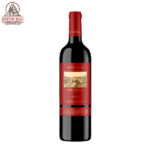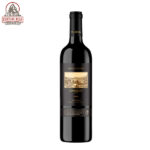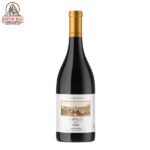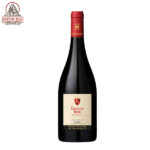One of the most basic topics broached when it comes to preferences in wine is the comparison of dry and sweet wines. How many times have you been asked which you like better? A lot of people unthinkingly say sweet wine, because, well, it seems like the tastier one! But wouldn’t you rather have a more informed opinion? Read on to know the difference between sweet and dry wines.
Let’s start with some basic understanding about wines.
The Fermentation Process
The essential difference between sweet and dry wines arises as a consequence of variance in their respective fermentation processes. While the method of producing dry wine is pretty much the same for all varieties, sweet wines may be made using one of four different processes.
During fermentation the yeast consumes the sugar in the grape juice producing alcohol and CO2. The yeast will continue this process until all of the grape sugar has been used up at which point having no food source, the yeast cells die and become the lees.
Wine is fermented to dryness because, among other things, leaving sugar in it would make it microbially unstable. Residual sugar in a wine which contains less than 16% alcohol creates a substrate for possible yeast growth, making the wine potentially unstable or liable to re-ferment in the bottle.
Most enologist (wine producers) consider primary fermentation as complete when residual sugars are in the range of 0.1-0.2%. Using the reducing sugar measurement, wine below 0.2% are generally considered stable in regard to the possibility of re-fermentation in the bottle.
At the point most of the residual sugars present are pentoses which are unfermentable by saccharomyces yeast. However it is possible for microbial activity to occur even when sugar are at less than “dry” levels. Brettanomyces, a spoilage yeast, can utilise residual sugars well below the 0.2% level.
Sweet dessert wines can range from 1.2 % to 20 % residual sugar. In wines such as Sauternes where the grapes are picked at very high brix, fermentation stops at about 15 % alcohol as the alcohol begins to act as a preservative drawing all of the water out of the yeast cells. In the case of Port wines, alcohol is added to the wine to stop the yeast fermentation.
Dry Wine
Dry wines are made by fermenting the juice of grapes using yeast. The yeast eats all the sugar, creating alcohol in the process. When the fermentation process is allowed to continue till the ultimate moment, the sugar content in the wine produced is negligible. Wine is never absolutely devoid of sugar but in the wines clocking 0 on the LCBO, there is less than .5% of residual sugar.
The difference between the sugar content of dry wines – where the fermentation is allowed to finish completely – is contingent upon the natural sweetness of grapes used. Sweeter grapes are used to make dry and medium wines while the more tart or sour ones are used for very dry varieties.
Sweet Wine
There are four popular processes used for making sweet wine. Depending upon the purpose, location and infrastructure available to the producer, the nature of process used is determined. The four processes are explained below.
Late Harvest. The most common method of making sweet wine is using grapes that have been harvested late. Mature grapes tend to be sweeter with lower acidity such that even when the fermentation is complete, the sugar level in the wine is high and therefore the wine sweetness is likely to be high.
Also, since there is a lack of tartness, the sweet taste is more pronounced. This method is mostly used by producers who harvest their own grapes and purposely use mature ones for fermentation.
Adding Sugar: In areas with cooler climates, naturally grown grapes tend to be more acidic. When these grapes are used to produce wine, sugar is often added to the juice to off-set its extreme tartness, and make the wine sweeter. If the juice is allowed to ferment as is, the final wine produced will then probably fall within the Very Dry category.
Sun Drying: Drying grapes that are not yet fully mature in the sun tends to increase the wine sweetness by producing a less acidic juice. Thus, some wine producers harvest their grapes early, dry them in the sun and then begin the fermentation process. This allows for the production of sweet wines that are fairly acidic as well.
Freezing: In some cases, mature grapes are allowed to freeze while on the vine before being subjected to pressing. With such methodology, the frozen water is retained in the grapes and the juice becomes like condensed syrup that is highly sweet. After fermentation, the wine thus produced usually has a high wine sweetness level. It is then not surprising that most Dessert Wines are made this way.
The Technicality of Wine Sweetness
As the nomenclature suggests, wines left with a greater content of sugar residue after fermentation are deemed sweet and those left with negligible amounts are called dry wines. There is actually a standard parameter called the LCBO Sugar Code which determines a wine sweetness level.
Mostly, the code has a range from 0 to 30, with 0 indicating extreme dryness and 30 indicating extreme sweetness. The various classifications within this scale are as follows:
- 0: Very dry
- 1 – 2: Dry
- 3 – 6: Medium (may be referred to as “Semi-dry”, “Semi-sweet or “Off-dry” too.
- 7 and above: Sweet
- 20 and above: Often called “Dessert” Wines and used for making puddings.
While the scale is a standard code for typification of wines, it is not the absolute marker of the nature of a wine. The way a wine is finally perceived – whether it tastes sweet or dry – depends upon various other factors too, including acidity, alcohol content and presence of tannins.
It is a misconception that dry wines cannot taste sweet. The sweetness of a wine on the palate is greatly influenced by the level of glycerol, alcohol, acidity, and tannins in the wine. Even the serving temperature of a wine can affect how sweet it tastes.
So, a “bone dry wine” with a residual sugar level of less than 0.2 % but one that is relatively high in alcohol and glycerol can actually taste somewhat sweet.
The CBS Rating System
Here at Chateau Bole, we have simplified a rating system to illustrate the sweetness, or dryness of a wine. Rather than rely solely on the amount of residual sugars in a wine, we try to communicate the actual taste.
As mentioned, a wine with low residual sugars can still taste “sweeter” than a wine of exactly the same amount of residual sugar, due to glycerol, alcohol, acidity, and tannins,. Therefore, the CBS (Chateau Bole Sweetness) Rating System considers all of these factors when suggesting a level of sweetness or dryness.
There are 9 levels for red wines, and 9 levels for white wines. CBS1 is the driest (less sweet) and CBS9 is the sweetest (more sweet).





